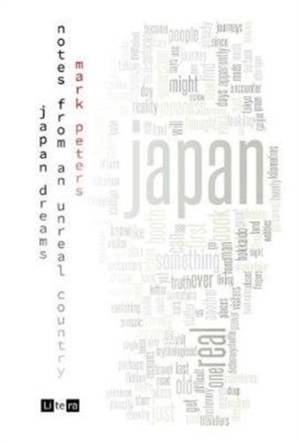
- Retrait gratuit dans votre magasin Club
- 7.000.000 titres dans notre catalogue
- Payer en toute sécurité
- Toujours un magasin près de chez vous
- Retrait gratuit dans votre magasin Club
- 7.000.0000 titres dans notre catalogue
- Payer en toute sécurité
- Toujours un magasin près de chez vous
Description
There is Japan, and then there is Japan.
Follow the author from his first early morning glimpse of Mount Fuji to the deepening realisation that even our most familiar and cherished notions can prove to be insubstantial scraps of nothingness.
At times earthy, at times philosophical, 'Japan Dreams' is more than a zen-like meditation on life. It is a high-speed criss-crossing of the landscape both geographical and social, a discourse on ways of seeing, and a surprisingly personal exploration of the differences between the many worlds we inhabit.
From the first edition
A traveller comes to Japan and is slowly absorbed into a complex and increasingly unnerving interplay of reality, representation, substitution, the virtual, the artificial, the counterfeit and the unreal.
In form, 'Japan Dreams' is loosely modelled on 'Pillow Book' by Sei Shonagon and 'As I crossed a bridge of dreams' by Lady Sarashina, both written c. 1000 AD. The narrative moves between travelogue, meditation, exploration of ideas, discourse on various subjects, dreams, lists, and introspection.
Fact and fiction become harder to separate as the story unfolds. What starts as straightforward documentary metamorphoses into chaotic self-absorption, and the reader is left examining the very same question examined by the narrator: is this real?
A deeply personal first-person account, 'Japan Dreams' touches on numerous aspects of Japanese culture: arts and heritage, attitudes to time and space, sexuality, language, technology, media, entertainment, identity and self, values, family, city and country life, and religion.
Spécifications
Parties prenantes
- Auteur(s) :
- Editeur:
Contenu
- Nombre de pages :
- 312
- Langue:
- Anglais
Caractéristiques
- EAN:
- 9780994193421
- Date de parution :
- 04-12-17
- Format:
- Livre relié
- Format numérique:
- Genaaid
- Dimensions :
- 140 mm x 216 mm
- Poids :
- 530 g

Les avis
Nous publions uniquement les avis qui respectent les conditions requises. Consultez nos conditions pour les avis.






